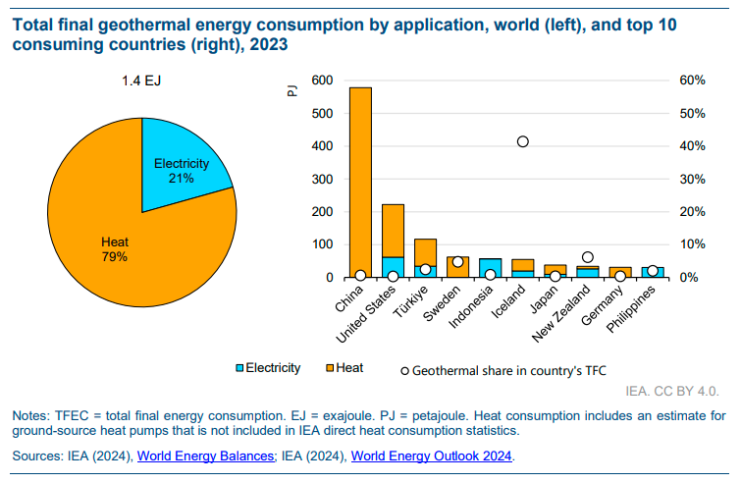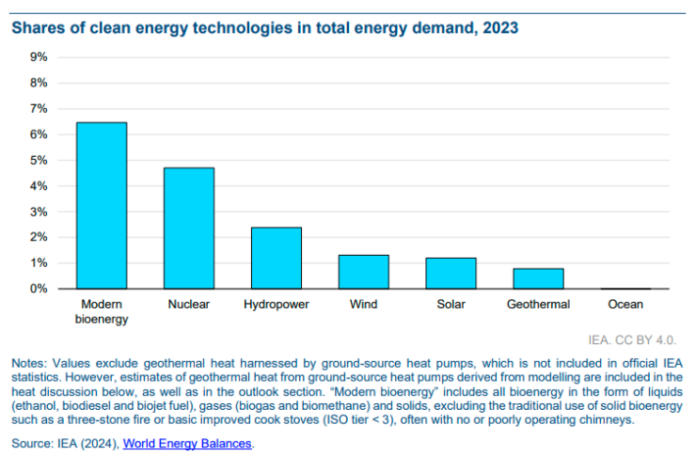International Energy Agency (IEA) has released a report showcasing significant investment opportunities in the geothermal energy sector. The report estimates that cumulative investments in geothermal could reach USD 1 trillion by 2035 and expand to USD 2.5 trillion by 2050, provided next-generation geothermal technologies achieve substantial cost reductions.
At its peak, geothermal investments could grow to USD 140 billion annually, surpassing current global onshore wind power investments. As a dispatchable clean energy source, geothermal is attracting interest not only from governments and utilities but also from sectors like technology companies, which face rising electricity demands for data centres.
Geothermal’s Role in Energy Transitions
The IEA underscores geothermal’s critical role in ensuring energy security, particularly for countries transitioning away from coal. Regions like China, India, and Southeast Asia could benefit immensely as they seek reliable clean energy alternatives. Meanwhile, Europe and the United States can use geothermal to complement intermittent solar and wind power.
China, the United States, and India are poised to lead the market for next-generation geothermal electricity, representing three-quarters of the global potential.
Oil and Gas Industry: A Key Enabler
The report highlights that up to 80% of geothermal project investments rely on expertise, technologies, and skills from the oil and gas industry, offering a unique opportunity for fossil fuel companies to diversify. With global oil and gas demand projected to decline, geothermal represents a hedge against commercial risks and a pathway for sustainable business growth.
The geothermal sector currently provides around 145,000 jobs, a number expected to rise sixfold to 1 million jobs by 2030. However, concerns loom over a potential skills shortage, as enrolments in traditional fossil fuel degree programs decline. The IEA calls for greater investment in training programs, apprenticeships, and centres of excellence to ensure a robust, skilled workforce.
Policy and Cost Reduction
Despite its potential, the report identifies policy support as a major bottleneck. While over 100 countries have adopted policies for solar and wind energy, fewer than 30 have specific geothermal policies. The IEA urges governments to prioritize geothermal in their clean energy roadmaps by implementing risk mitigation measures, simplifying permitting processes, and ensuring long-term revenue certainty for investors.
The IEA estimates that with policy support and innovation, costs for next-generation geothermal could decline by 80 percent by 2035, reaching USD 50 per megawatt-hour. At this cost level, geothermal would emerge as one of the most competitive sources of dispatchable low-emissions electricity, comparable to hydro, nuclear, and bioenergy, and even competitive with solar PV and wind paired with battery storage.
Who is using geothermal energy
While geothermal energy is used for heating/cooling and electricity in more than
40 countries today, the 10 largest consumers – China, the United States, Turkiye, Sweden, Indonesia, Iceland, Japan, New Zealand, Germany and the Philippines – together account for almost 90 percent of the global total.

Iceland has the highest share, meeting almost half its final energy consumption
with geothermal resources because they are highly available and the country’s
policies have supported continuous exploration, drilling and project development
since the 1920s.
China is responsible for almost half of global geothermal final energy consumption, using it exclusively for space heating, followed by the United States.
In Turkiye, geothermal final energy use is divided between electricity and heating,
used mostly in the agriculture and tourism/wellness sectors, while in Sweden and
Germany, ground-source heat pumps dominate consumption. In other major
markets, including New Zealand, the Philippines and Italy, most geothermal
energy is used in the form of electricity.
A Path Forward
To realize its potential, geothermal development requires urgent policy reforms, streamlined permitting processes, and strong environmental safeguards. Governments are encouraged to design targeted strategies to overcome development challenges, ensuring geothermal can fulfill its role as a scalable, reliable clean energy source.
With rising global electricity demand — driven by electric vehicles, cooling systems, and data centres — the IEA report reveals that geothermal energy, once overlooked, could emerge as a cornerstone of the clean energy future.
Baburajan Kizhakedath

